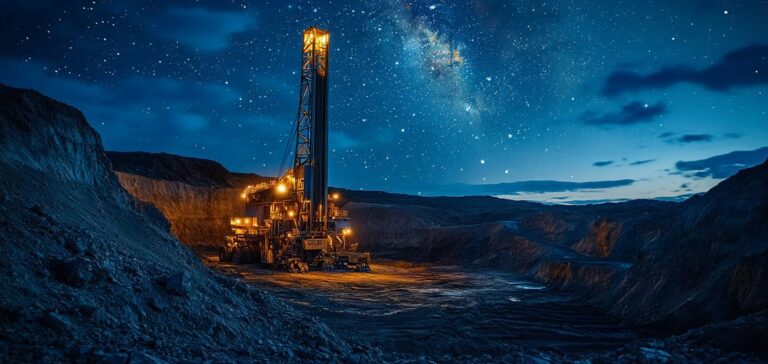Bayridge Resources Corp. has announced the receipt of a level 2 drilling permit for its Constellation project located in the Athabasca Basin, Canada. This permit allows the company to drill up to 30 sites, totaling up to 10,000 meters of diamond drilling over a period of 18 months.
A Structured Drilling Program
The company plans to begin operations with a fully funded initial drilling phase. In addition, 40 kilometers of cut lines have been authorized for ground geophysical surveys. The first exploration results from Phase I have been obtained and will be published once the technical team has completed its quality control (QA/QC) procedures.
The Constellation project presents strong potential for uranium, with several anomalies identified through spectrometric and electromagnetic surveys. During Phase I of exploration, 15 point radiometric anomalies were recorded, often associated with VTEM (versatile time-domain electromagnetic) conductors identified during earlier airborne geophysical surveys.
Favorable Geology for Mineralization
The property lies on a geological structure favorable for uranium mineralization of the unconformity-type deposit. Regional magnetic and geological studies have revealed structural lineaments oriented north-northwest and east-southeast, which may serve as conduits for hydrothermal circulations. These areas are generally favorable for the formation of uranium deposits.
Electromagnetic conductors oriented northeast had been historically identified on the property but had not been the subject of in-depth exploration. These conductors are considered promising targets for uranium due to their frequent association with unconformity-type deposits and deep mineralization in the Athabasca Basin.
Financial and Strategic Commitments
Bayridge Resources holds an option to acquire up to 80% of the Constellation project through a combination of cash payments, share issuances, and exploration investments over a four-year period. Located 60 kilometers southwest of the Key Lake mine, the site is accessible by helicopter or floatplane, with potential access via winter road through Highway 914.
The company also announced the granting of one million stock options to certain members of its management and consultants. These options, exercisable at a price of $0.06, are subject to the terms of Bayridge’s equity incentive plan and will expire in five years.
Tim Henneberry, consultant and registered geologist, has validated the technical content of this release in accordance with the requirements of National Instrument 43-101, the Canadian standard for the disclosure of mining projects.






















